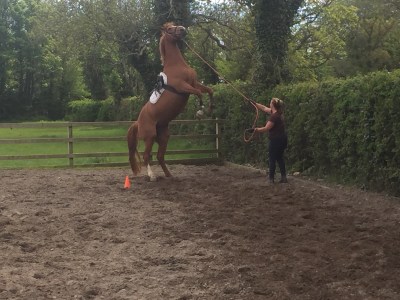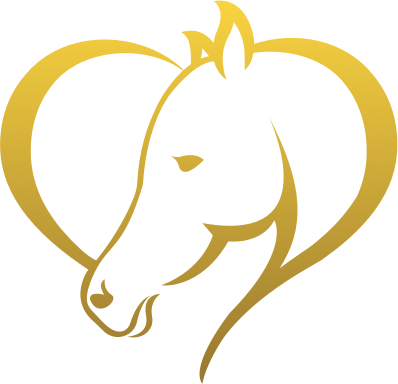You may have heard the terms “left brain” or “right brain”, but what does this actually mean? If you have ever felt your horse had a double personality, you weren’t entirely incorrect.
The terms “left brain” and “right brain” have become more mainstream in the natural horsemanship world recently, particularly with the advent of parelli “horsenalities”, however the concept is not a new one, and is no where near as complicated as some trainers like to make it.
Most animal trainers are very familiar with the idea of left brain, right brain, particularly when working with prey animals such as horses.
Many of my students will say “it seems like my horses personality changes daily”, and in fact it does, depending on how your horse is thinking, or reacting.
When your horse is acting on instinct, or more precisely reacting on instinct, he us using the right side of his brain.
When he is thinking and rationalising, he is using his left side.
For some horses, particularly hot blooded horses like thoroughbreds and arabs, they naturally tend to react from the right side of their brains. These horses are well suited to jobs such as racing, where they don’t have to think, just run.
For colder and warmer blooded horses, such as cobs and drafts, they tend to work more on their left side, which is why they are more suited for farm work, or other jobs that require maintaining a level and thinking mind.
When I come out to someone, I mentally evaluate their horses tendencies. Most problem horses are spending the majority of their time in the right brain, making them reactionary, high adrenaline, fearful, and unconfident when away from the other horses.
But left brain horses can have problems of their own. These horses are very smart and somewhat calculating. Don’t let the laid back demeanour fool you, these horses are very clever and get bored easily. If they are not being mentally or physically challenged, they will find ways to create a more interesting life.
Generally at the expense of their owners!
Knowing how your horse tends to think about life will help you be far more effective in building a relationship where you remain in control, and they are happy to follow.
Right brain horses need consistency and repetition. They need a confident owner who has a plan, and doesn’t let their emotions get unbalanced. Keeping the attention of your right brain horse is the only way to keep him thinking. When his attention drifts, so will his obedience. Doing repetitive tasks that require him to think about where he is putting his feet will help him think more, forcing him to exercise his left side of the brain more.
Left brain horses are smart and playful. Repetition is boring as they learn quickly. Once they understand a concept, it is important to change things a bit to increase the challenge. They like to work things out, and training sessions need to be kept fun, quick and exciting. Sometimes food treats can be added (if they are polite) as left brain horses tend to be fairly mouthy and like using their mouths.
Most horses work from both sides of their brains, depending on the situation. The majority of the problem horses I work with (95%) are spending to much reactionary time on the right side.
I find the easiest way to explain this to owners in a very simple way to understand is to think of your horse as a split personality. The “bad” horse and the “good” horse.
The bad horse doesn’t pay attention, walks with a high head and big eyes. He doesn’t blink much and may call to or try to go back to the other horses. He may walk on top of you, break tack, rear, kick, or try to run off. May be hard to lunge, tack or groom. When riding he feels tense, may balk or nap and threaten to buck.
The good horse is calm. A pleasure to be with. He seems interested and engaged with whats happening. He is the sort of horse you can hardly wait to ride. He stands nicely for everything you want to do, his head is low and he is blinking a lot. He is responsive to your aids, and easy to handle.
When I come out to an owner, I teach them several exercises that take their horse out of the right side (bad horse) and moves them into the left side (good horse).
Of course a horse working out of his right side is by no means a “bad” horse, he is just being the horse he knows how to be, but I find this concept makes it very easy for an owner to quickly gauge what work needs to be done in order to get on with their day and have a pleasant experience with their horse.
The more the horse learns to be in his left brain, the more calm, obedient and confident he becomes. Thinking and remaining attentive and calm become habit. It’s much easier not being tense and fearful all the time. So slowly over time, these difficult horses become a joy to be around, and it opens the door to anything.
I teach my owners to gauge the situation. If the horse is drifting into his right (bad) side, to use their exercises until he comes back into the left (good) side and relaxes. This applies to riding as well. If he starts to get tense, head comes up, he’s getting ready to become reactionary, then it’s time to get off and do some exercises to remind him to settle and put his thinking cap back on.
The more you remind them, the less you have to remind them!
So what is your horses default behaviour? Right brain or left?










Leave a Reply
You must be logged in to post a comment.